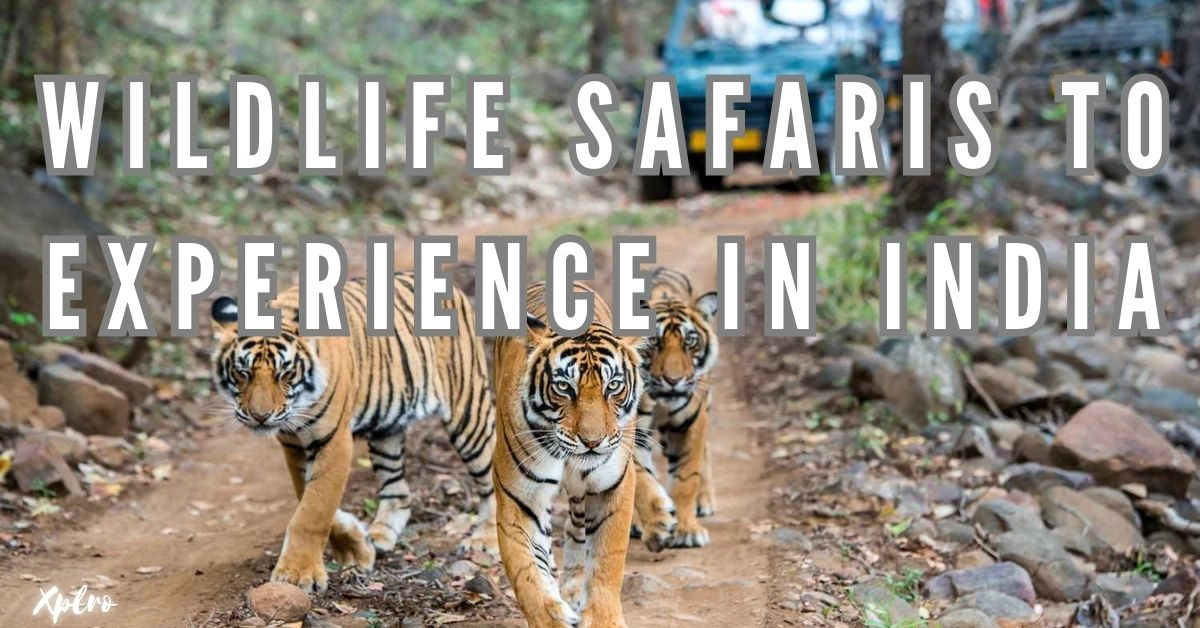Wildlife Safaris to Experience in India, a land of incredible biodiversity, is home to numerous wildlife sanctuaries and national parks that offer some of the world’s most thrilling safari experiences. From the dense jungles teeming with majestic Bengal tigers to the wetlands brimming with rare bird species, India’s wilderness invites adventurers and nature lovers alike. Here are the top 12 wildlife safaris you should experience in India:
- 1. Ranthambore National Park, Rajasthan
- 2. Jim Corbett National Park, Uttarakhand
- 3. Bandhavgarh National Park, Madhya Pradesh
- 4. Kaziranga National Park, Assam
- 5. Sundarbans National Park, West Bengal
- 6. Periyar Wildlife Sanctuary, Kerala
- 7. Kanha National Park, Madhya Pradesh
- 8. Gir National Park, Gujarat
- 9. Pench National Park, Madhya Pradesh
- 10. Tadoba Andhari Tiger Reserve, Maharashtra
- 11. Nagarhole National Park, Karnataka
- 12. Bandipur National Park, Karnataka
- FAQs
1. Ranthambore National Park, Rajasthan
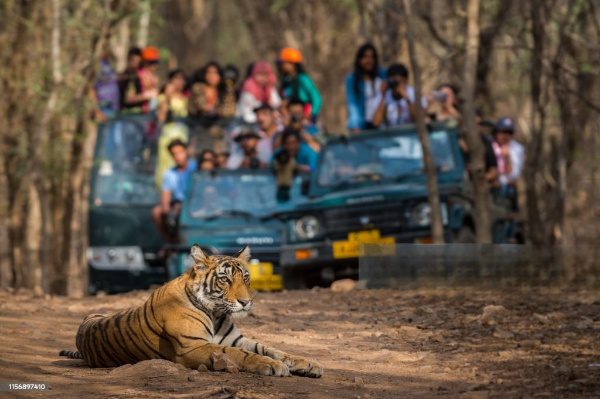
Ranthambore National Park is one of India’s most renowned wildlife destinations, famous for its population of majestic Bengal tigers. The park’s picturesque landscape, featuring ancient ruins, lush forests, and serene lakes, makes it a top choice for wildlife photographers.
Key Attractions:
- Tiger Sightings: The star attraction is the Bengal tiger, often seen lounging or hunting near water bodies.
- Other Wildlife: Leopards, sloth bears, Indian foxes, and a variety of bird species can also be spotted.
- Safari Experience: Jeep and canter safaris are offered twice a day.
Best Time to Visit: October to April, when tigers are more easily spotted.
2. Jim Corbett National Park, Uttarakhand
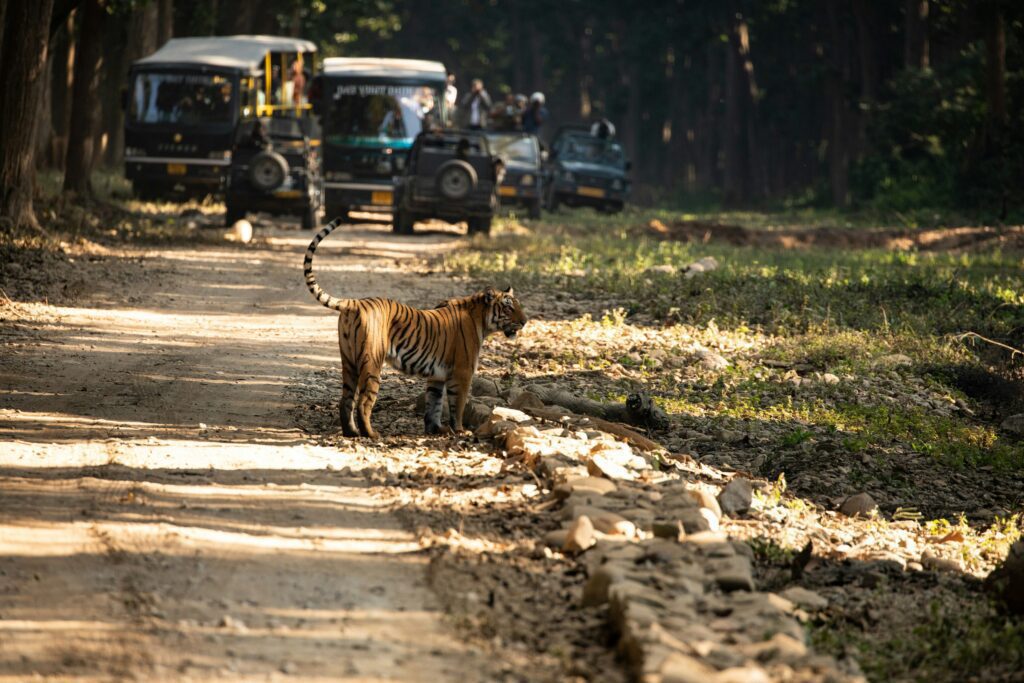
As India’s oldest national park, Jim Corbett is a haven for wildlife enthusiasts. Part of the larger Corbett Tiger Reserve, it’s renowned for its diverse wildlife and picturesque landscape.
Key Attractions:
- Tiger Reserve: Known for its significant tiger population
- Other Wildlife: Elephants, crocodiles, deer, and over 600 bird species
- Safari Experience: Elephant safaris and jeep safaris through the dense forest and river valleys
Best Time to Visit: November to June, with the best tiger sightings from April to June.
3. Bandhavgarh National Park, Madhya Pradesh
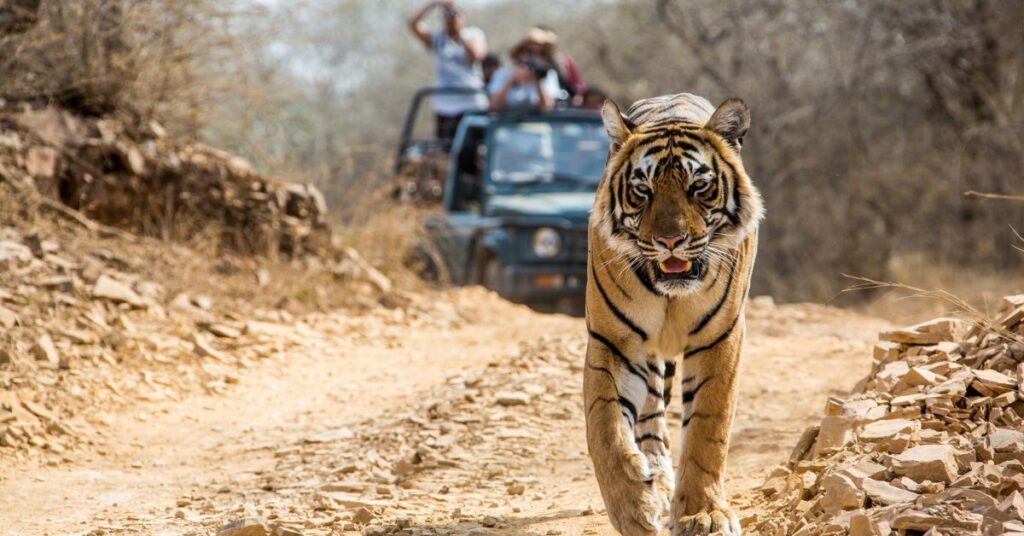
Bandhavgarh National Park boasts one of the highest densities of Bengal tigers in the world. The park’s rugged terrain and ancient fort ruins enhance the thrill of exploring this wild habitat.
Key Attractions:
- Tiger Territory: A hotspot for tiger photography
- Other Wildlife: Indian bison, leopards, and a variety of deer species
- Safari Experience: Open jeep safaris with knowledgeable guides
Best Time to Visit: October to June, especially March to June for tiger sightings.
4. Kaziranga National Park, Assam
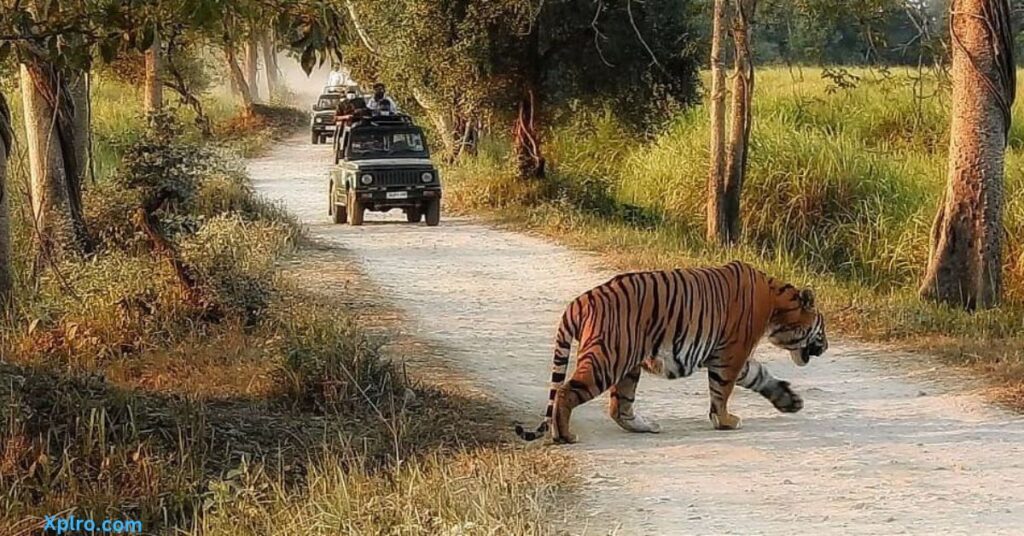
Kaziranga National Park, a UNESCO World Heritage Site, is celebrated for its population of the Indian one-horned rhinoceros. The park’s wetlands and grasslands also support a diverse range of wildlife.
Key Attractions:
- One-Horned Rhinoceros: Nearly two-thirds of the world’s population lives here.
- Other Wildlife: Tigers, elephants, wild water buffaloes, and over 500 bird species
- Safari Experience: Elephant safaris and jeep safaris offer different perspectives of the park
Best Time to Visit: November to April, as the park is closed during the monsoon season.
5. Sundarbans National Park, West Bengal
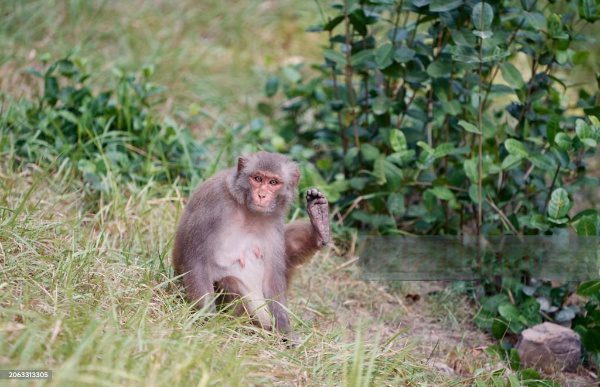
Sundarbans National Park, a UNESCO World Heritage Site, is renowned for its dense mangrove forests and as the habitat of the elusive Royal Bengal tiger. The park’s intricate network of waterways makes boat safaris the best way to explore.
Key Attractions:
- Royal Bengal Tigers: Known for their unique adaptation to the mangrove ecosystem
- Other Wildlife: Saltwater crocodiles, spotted deer, and various bird species
- Safari Experience: Boat safaris through the winding waterways of the Sundarbans
Best Time to Visit: September to March, when the weather is pleasant and wildlife sightings are more frequent.
6. Periyar Wildlife Sanctuary, Kerala
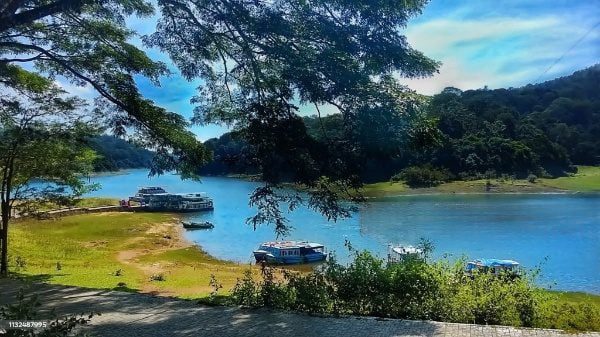
Nestled in the Western Ghats, Periyar Wildlife Sanctuary is renowned for its scenic beauty and diverse wildlife. The Periyar Lake, formed by the Mullaperiyar Dam, is the centerpiece of this sanctuary.
Key Attractions:
- Elephants: Watch herds of elephants bathing and playing in the lake
- Other Wildlife: Tigers, gaur, and Malabar giant squirrels
- Safari Experience: Boat safaris on Periyar Lake and guided nature walks
Best Time to Visit: October to April, for the most comfortable weather and best wildlife viewing.
7. Kanha National Park, Madhya Pradesh
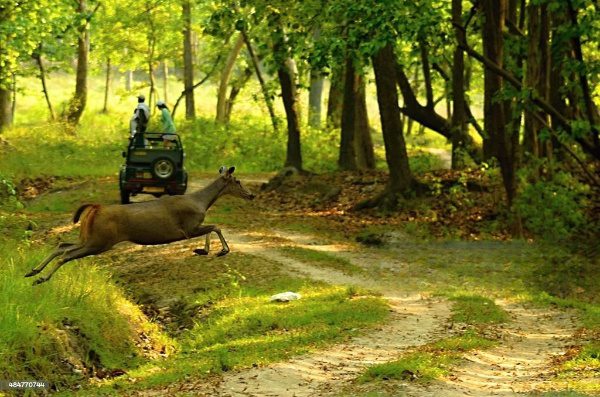
Kanha National Park is one of India’s largest national parks and is credited as the inspiration for Rudyard Kipling’s The Jungle Book. The park’s lush sal and bamboo forests make it a perfect habitat for a variety of wildlife.
Key Attractions:
- Barasingha (Swamp Deer): Conservation efforts here have saved the species from extinction.
- Other Wildlife: Tigers, leopards, and langurs
- Safari Experience: Open jeep safaris with local naturalists
Best Time to Visit: October to June, with the best tiger sightings from March to June.
8. Gir National Park, Gujarat
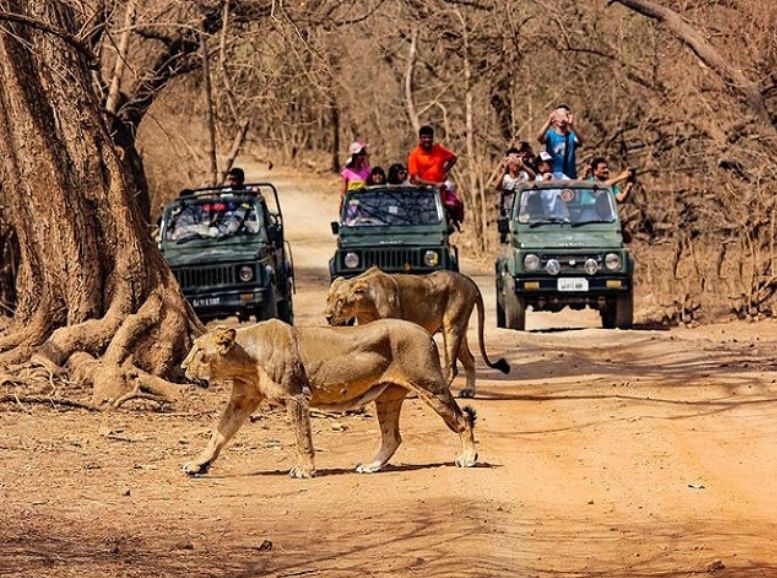
Gir National Park is the only place in the world where you can see Asiatic lions in the wild. The dry deciduous forest and rugged terrain make for an exhilarating safari experience.
Key Attractions:
- Asiatic Lions: The park is home to more than 500 lions.
- Other Wildlife: Leopards, sambar deer, and a variety of bird species
- Safari Experience: Jeep safaris that take you deep into lion territory
Best Time to Visit: October to May, with April and May being the best months for lion sightings.
9. Pench National Park, Madhya Pradesh
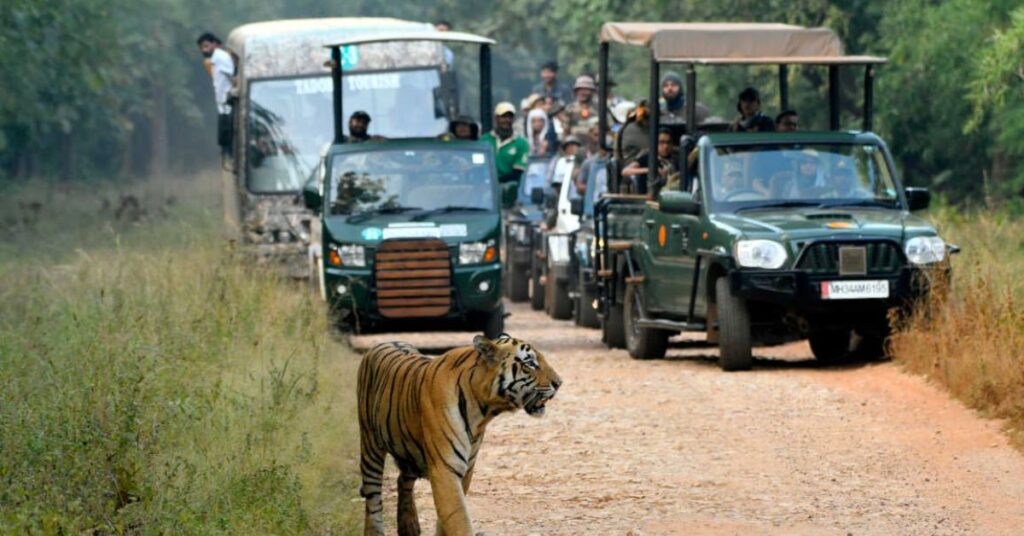
Pench National Park, another inspiration for The Jungle Book, is renowned for its rich flora and fauna. The park is named after the Pench River, which flows through it.
Key Attractions:
- Tiger Reserve: Home to a significant number of tigers and leopards
- Other Wildlife: Wild boar, deer, and over 210 bird species
- Safari Experience: Jeep safaris offering breathtaking views of the park’s landscape
Best Time to Visit: November to May, with peak wildlife activity in the summer months.
10. Tadoba Andhari Tiger Reserve, Maharashtra
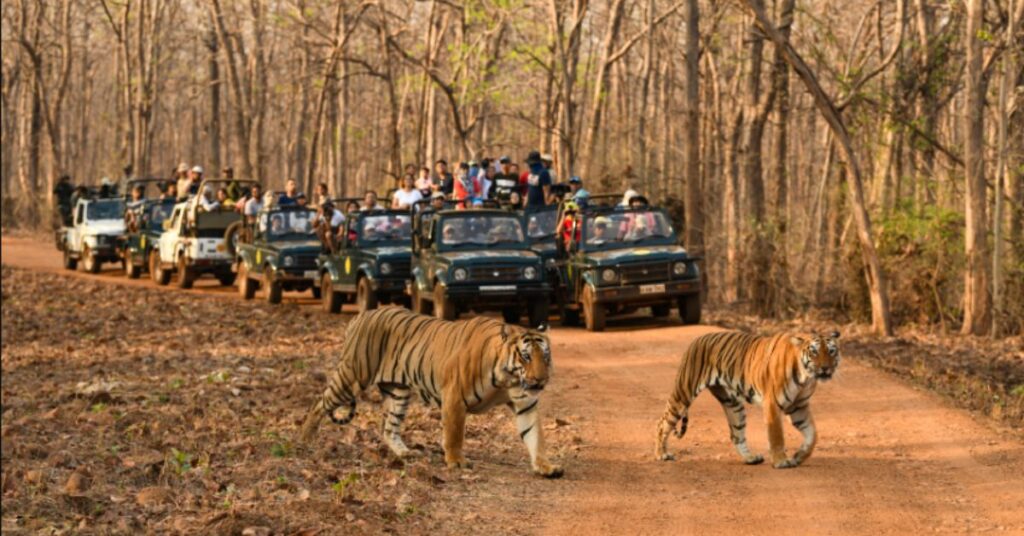
Tadoba Andhari Tiger Reserve is one of the oldest and largest tiger reserves in Maharashtra. The park features dense forests and beautiful lakes that attract a wide range of wildlife.
Key Attractions:
- Tiger Sightings: Known for frequent tiger encounters
- Other Wildlife: Sloth bears, wild dogs, and a variety of reptiles
- Safari Experience: Jeep safaris with expert guides who provide insights into the ecosystem
Best Time to Visit: October to June, with summer months offering the best chance to spot tigers.
11. Nagarhole National Park, Karnataka
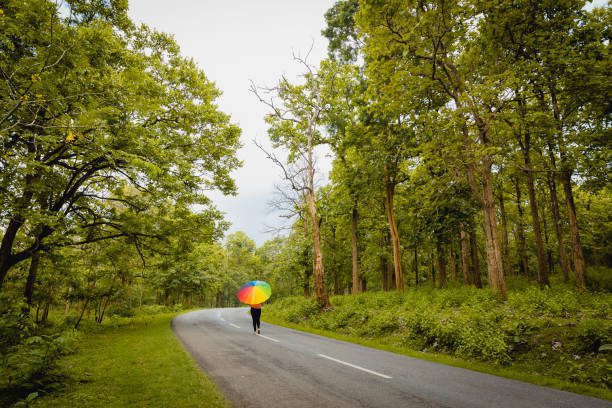
Part of the Nilgiri Biosphere Reserve, Nagarhole National Park is renowned for its dense forests, rolling hills, and a variety of wildlife. The Kabini River adds to the park’s stunning scenery.
Key Attractions:
- Elephants and Tigers: The park is a popular spot for elephant and tiger sightings.
- Other Wildlife: Indian bison, deer, and a variety of bird species
- Safari Experience: Jeep and boat safaris that offer a closer look at the park’s inhabitants
Best Time to Visit: October to May, especially the dry season for the best wildlife viewing.
12. Bandipur National Park, Karnataka
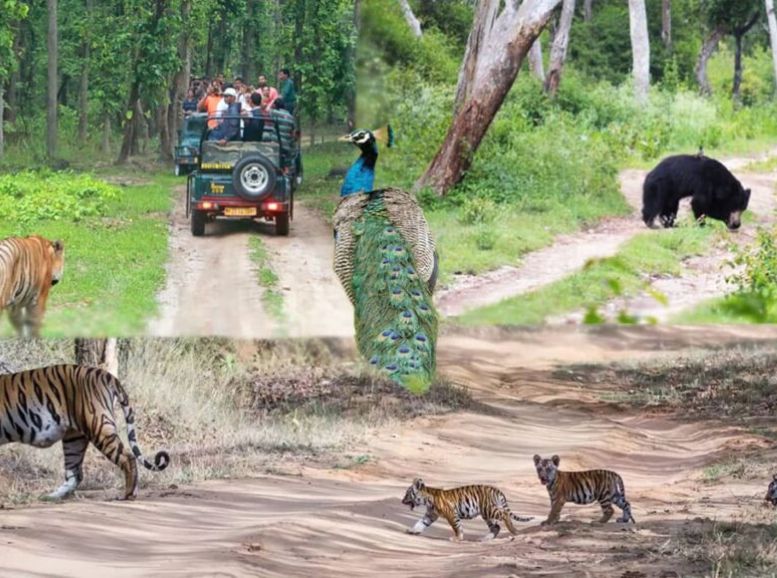
Once the private hunting grounds of the Mysore Maharajas, Bandipur National Park is now a well-protected sanctuary within the Nilgiri Biosphere Reserve. It is famous for its beautiful landscape and diverse wildlife.
Key Attractions:
- Tiger and Elephant Reserve: One of the key reserves for both species
- Other Wildlife: Leopards, Indian gaurs, and various reptiles
- Safari Experience: Jeep safaris and bus tours led by experienced guides
Best Time to Visit: October to March, when the weather is mild and sightings are plentiful.
Conclusion – Wildlife Safaris to Experience in India
India’s wildlife safaris offer an unforgettable adventure, allowing you to connect with nature and witness the majesty of its diverse fauna. From the majestic Bengal tigers of Ranthambore and Jim Corbett to the elusive one-horned rhinoceros of Kaziranga, India’s national parks and sanctuaries are teeming with wildlife. Embark on thrilling jeep safaris or serene boat rides through the Sundarbans, Periyar, and Nagarhole, where you can encounter tigers, elephants, leopards, and a myriad of other fascinating creatures. Whether you’re an avid wildlife photographer or simply a nature lover, India’s wildlife safaris promise an incredible experience. Start planning your adventure with one of these top wildlife destinations and immerse yourself in the untamed beauty of India. Explore more at Xplro.com.
FAQs
1. When is the best time to go on a wildlife safari in India?
- The best time to enjoy a wildlife safari in India is generally from October to June. These months offer dry conditions that make it easier to spot animals near water bodies. March to June is ideal for tiger sightings, as animals come out more frequently to drink.
2. Which national parks in India are best known for tiger sightings?
- Ranthambore, Bandhavgarh, and Kanha National Parks are renowned for their high chances of tiger sightings. These parks have significant tiger populations and well-organized safari experiences tailored for spotting these majestic creatures.
3. Can I book a wildlife safari in advance?
- Yes, most wildlife reserves and national parks in India allow online booking of safari slots. You can book through official park websites or trusted travel platforms to secure your spot, especially during peak seasons.
4. How long should I plan to stay at a wildlife sanctuary for a complete experience?
- A stay of 2 to 3 days is recommended. This provides multiple opportunities to go on different safaris, increasing your chances of seeing a variety of wildlife and exploring the beauty of the park at different times of the day.
5. Are wildlife safaris safe in India?
- Yes, wildlife safaris in India are safe when conducted by professional and licensed guides. These experts follow strict safety protocols and ensure visitors remain secure throughout the journey. Always follow the instructions provided by your guide for a safe experience.
6. What should I wear on a wildlife safari in India?
- Wear comfortable and neutral-colored clothing, such as shades of khaki, brown, or olive, to blend with the surroundings. Long-sleeved shirts and pants are ideal for protection from insects and the sun. Avoid bright colors that might disturb the wildlife.
7. Can I take photographs during a safari?
- Yes, photography is a major part of the safari experience. Ensure your camera has a good zoom lens, and always follow guidelines like keeping quiet and avoiding the use of flash, which can startle animals.
8. What is the difference between a jeep safari and a canter safari?
- A jeep safari typically seats 4-6 people and offers a more intimate and flexible experience. In contrast, a canter safari is a larger vehicle that can accommodate 16-20 people, making it a more economical option for bigger groups. Both safaris are guided and cover similar areas of the park.
9. Do I need a guide for a wildlife safari?
- Yes, having a guide is crucial. Guides are knowledgeable about animal behavior and park landscapes, and they enhance the safari experience by sharing insights and ensuring visitors’ safety. They are also skilled in tracking wildlife.
10. Are there any age restrictions for safari participants?
- While there aren’t strict age restrictions, it’s generally advised that children under 5 years avoid safaris due to the bumpy rides and the need to stay quiet for long periods. Some parks may have specific age guidelines, so check in advance.
11. What are the accommodation options near popular wildlife parks in India?
- Accommodations vary from luxury lodges and boutique jungle resorts to budget-friendly hotels and eco-camps. Popular parks like Jim Corbett, Kanha, and Kaziranga offer a wide range of lodging options to suit different budgets and preferences, often located near the park entrances.
12. How can I maximize my chances of seeing tigers or other big cats?
- To increase your chances, visit during the dry season, and choose early morning or late afternoon safari slots when animals are more active. Being patient, silent, and alert while following your guide’s instructions will also improve your wildlife viewing experience.




